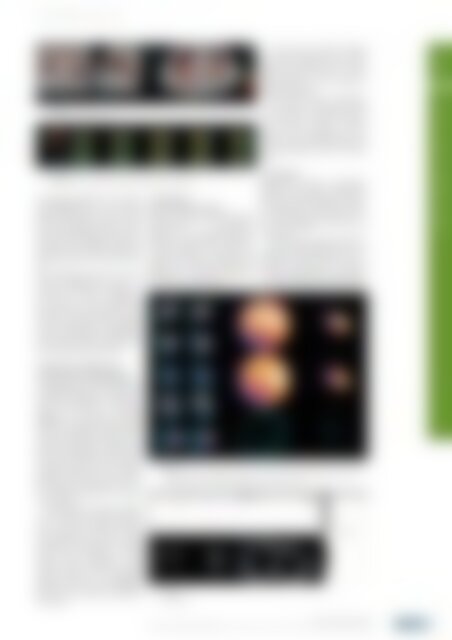atw International Journal for Nuclear Power | 04.2020
Title atw - International Journal for Nuclear Power | 04.2020 Description Ever since its first issue in 1956, the atw – International Journal for Nuclear Power has been a publisher of specialist articles, background reports, interviews and news about developments and trends from all important sectors of nuclear energy, nuclear technology and the energy industry. Internationally current and competent, the professional journal atw is a valuable source of information. www.nucmag.com
Title
atw - International Journal for Nuclear Power | 04.2020
Description
Ever since its first issue in 1956, the atw – International Journal for Nuclear Power has been a publisher of specialist articles, background reports, interviews and news about developments and trends from all important sectors of nuclear energy, nuclear technology and the energy industry. Internationally current and competent, the professional journal atw is a valuable source of information.
www.nucmag.com
You also want an ePaper? Increase the reach of your titles
YUMPU automatically turns print PDFs into web optimized ePapers that Google loves.
<strong>atw</strong> Vol. 65 (2020) | Issue 4 ı April<br />
| Fig. 9.<br />
Pulmonary perfusion (SPECT/CT).<br />
| Fig. 10.<br />
Normal pulmonary ventilation (above) and perfusion (below) (scintigram).<br />
morphological findings, bone scintigraphy<br />
(Figure 8) is a very sensitive<br />
diagnostic procedure and can often<br />
detect pathological findings earlier<br />
than other examinations (e.g. conventional<br />
x-rays). In addition, bone scintigraphy<br />
as a whole-body examination<br />
allows assessment of the whole skeleton.<br />
The radiopharmaceuticals used are<br />
Tc-99m phosphonates which are<br />
attached to the bone, depending on<br />
the extent of bone metabolism.<br />
Skeletal metastases frequently cause<br />
increased bone metabolism because<br />
of their stimulation of osteoblastic<br />
activity. Increased bone metabolism is<br />
also found in fractures, traumas, and<br />
some metabolic bone disorders.<br />
Tc-99m-Mag3<br />
<strong>for</strong> renal function testing<br />
Mag3 is a small peptide (mercap toacetyltriglycine<br />
= “glycyl- glycylglycine”).<br />
It is extracted from the<br />
blood by the tubular cells of the kidney,<br />
secreted tubularly and almost not<br />
reabsorbed. Renal scintigraphy with<br />
Mag3 is used to detect two important<br />
parameters: a) clearance and b) partial<br />
function of both kidneys.<br />
In this context, clearance reflects<br />
the tubular extraction rate (TER)<br />
which is calculated from the activity<br />
administered and from the activity<br />
rates measured in the serum at<br />
defined time points.<br />
With renal function scintigraphy<br />
it is possible to determine global<br />
clearance values, partial function of<br />
the respective kidneys, identify<br />
defects in the parenchyma of the<br />
kidneys, assess the outflow and detect<br />
any extravasation from the urinary<br />
tract.<br />
Tc-99m-MIBI<br />
Myocardial perfusion scintigraphy<br />
(MPS) is a non-invasive examination<br />
procedure which illustrates the relative<br />
distribution of blood flow within<br />
the myocardium (left ventricle) in a<br />
3D image (Figure 11). See also<br />
chapter 2.4.1.<br />
As a functional imaging technique,<br />
it differs fundamentally from morphologically<br />
based imaging such as<br />
coronary angiography or coronary<br />
CT angiography (CTA) and magnetic<br />
resonance angiography (MRA) which<br />
ENVIRONMENT AND SAFETY 221<br />
Tc-99m-HSA combined with<br />
Tc-99m-“gas” <strong>for</strong> lung diagnosis<br />
Lung diagnosis in nuclear medicine is<br />
usually per<strong>for</strong>med as a combined V/P<br />
(ventilation/perfusion) examination<br />
using the SPECT/CT technique<br />
(Figure 9). For assessment of lung<br />
per fusion, a temporary microembolization<br />
of capillaries takes place after<br />
intravenous injection of small protein<br />
particles (microspheres, approx. diameter<br />
10 to 30 μm), the size of which<br />
is slightly above the mean capillary<br />
diameter. Distribution of the radiopharmaceutical<br />
corresponds then to<br />
the regional distribution of pulmonary<br />
perfusion.<br />
For assessment of lung ventilation,<br />
a “dry” aerosol of ultra-fine particles<br />
(size

















